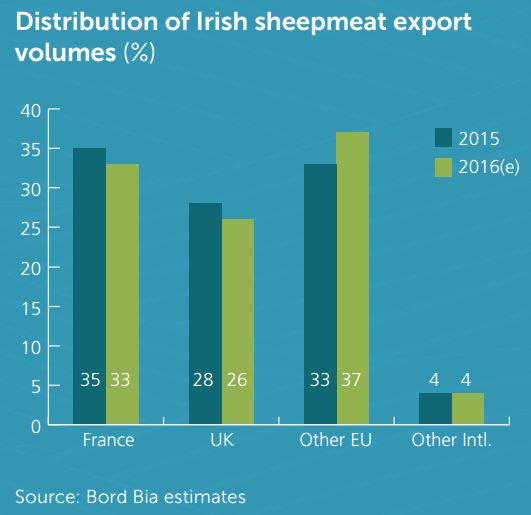The quantity of Irish sheepmeat exported to both Germany and Belgium posted increases during 2016, figures from Bord Bia show.
The Bord Bia Export Performance and Prospects 2016-2017 outlook and review states that these two countries, along with Sweden and Denmark, became key growth markets for Irish sheepmeat in 2016.
Shipments to Germany showed a rise of 9% to 4,000t valued at an estimated €24m, it says, driven by a growing demand for lamb among consumers particularly in ethnic channels.
In addition, export volumes of Irish lamb to Belgium increased by over 10% to just under 4,000t valued at €23m. This increase comes on the back of falling imports from New Zealand and the UK.
UK and France still the big two
Meanwhile, figures from Bord Bia also show that the UK and France continue to be the core markets for Irish sheepmeat.
It is estimated that these two markets accounted for just under 60% of total Irish sheepmeat export volumes in 2016.
However, exports to France eased by around 2% on the year before to around 16,000t valued at €90m, while shipments to the UK were affected by a challenging currency environment.
Bord Bia says this lead to a decline of almost 4% in export volumes, with nearly 13,000t of sheepmeat being shipped to the UK in 2016.
Other markets
According to Bord Bia, Irish sheepmeat exports to Sweden performed strongly with volumes estimated at 5,000t in 2016.
This makes Sweden the third largest market for Irish sheepmeat exports, with Ireland supplying one third of Sweden’s sheepmeat imports – second only to New Zealand.
Looking at non-EU markets, Switzerland remains the main destination followed by Hong Kong.
There was a strong increase in shipments to Switzerland making it one of the top five growth markets for Irish lamb.
Overall international trade in 2016 was estimated at almost 2,000t accounting for around 4% of exports.

